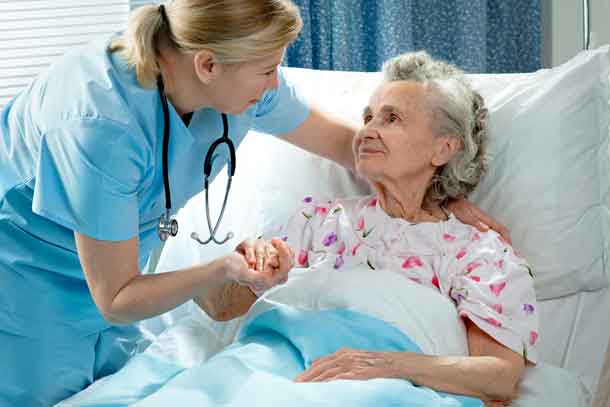
THUNDER BAY – HEALTH – Pressure injuries (also called bedsores or pressure ulcers) are injuries to skin and tissue caused by prolonged pressure. Preventing pressure injuries from occurring is one of the goals set by Thunder Bay Regional Health Sciences Centre in order to deliver an optimal experience for seniors.
Pressure injuries most often develop on skin that covers the bony areas of the body, such as the hips, ankles, heels and the tailbone. Hospital patients and people who have a medical condition that limits their ability to change position, such as those confined to a wheelchair or bed, are at risk for developing pressure injuries.
Seniors are at an increased risk of pressure injuries because of changes to the skin that are part of the normal aging process. Pressure injuries can lead to serious infections, or further complicate existing medical conditions, resulting in longer hospital stays and delays in returning home.
“At our Hospital, we’ve made seniors’ health a priority. We strive to provide an environment that minimizes the vulnerability of senior patients and promotes safety, comfort, independence, and functional well-being,” said George Fieber, Nursing Practice Lead. “That’s why we are so diligent about pressure injuries – regular assessments and early intervention to prevent these types of injuries is one way we provide quality care.”
Our nurses use an evidence based assessment tool called the “Braden Skin Risk Assessment” to identify those patients who might be at risk for developing a pressure injury. Patients with limited physical mobility are assisted with repositioning and with hygienic care. Patients assessed as being at high risk may also be referred to other members of our interprofessional team including specialist physicians, physiotherapists, occupational therapists, clinical dietitians and our clinical nurse specialist for wounds.
Tips to reduce your chances of developing a pressure injury in the community or hospital include:
- Change your position at least every two hours when you are in bed;
- Change your position as often as possible while sitting;
- Lift your body instead of dragging it when you are moving or changing position;
- Keep the head of your bed as low as you can tolerate when you are sleeping to prevent sliding motion;
- If your skin is being exposed to bodily fluids (sweat, urine, stool) more often, tell your caregiver or hospital staff;
- Check your skin when you go to bed and before you get out of bed in the mornings;
- Keep your skin clean and dry;
- Check with your health care team to see if using a moisturizer (cream) would help;
- Drink lots of fluids and eat a well-balanced diet.
To learn more about how the Hospital has prioritized Seniors’ health, visit www.tbrhsc.net.







